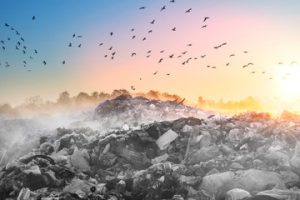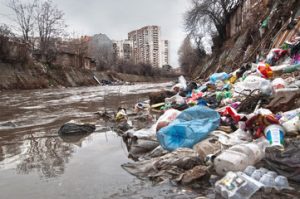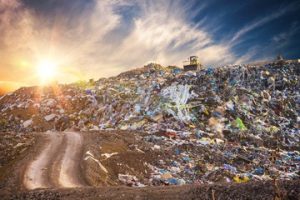Why is GEI MEKONG so against the practice of landfill?
With minimal government regulations in place for landfill sites in the Mekong Countries, it’s most likely that anything can be buried in the ground of a dump site. As buried organic materials decompose, they release methane, a potent greenhouse gas that damages air quality and the environment.
About two-thirds of landfill waste contains biodegradable organic matter from households, business and industry. As this material decomposes, it releases methane gas. As a potent greenhouse gas, methane traps up to 20 times more heat in the atmosphere compared with carbon dioxide the EPA states. Often the air surrounding landfill sites smells unpleasant, due to the decaying organic waste.
Biodiversity Impacts
The development of a landfill site means the loss of various species who use the area as their habitat. Changes also occur in local species, with some mammals and birds being replaced by species that feed on refuse, such as rats and crows. Vegetation changes occur, regardless of the duration of the landfill site, as some plant species are replaced by others.
As rain falls on landfill sites, organic and inorganic constituents dissolve, forming highly toxic chemicals leaching into groundwater. Water that rinses through these chemicals collects at the base of the landfill and usually contains high levels of toxic metals, ammonia, toxic organic compounds and pathogens. This can result in serious contamination of the local groundwater. This mixture can create a high biological oxygen demand, meaning it can quickly de-oxygenate water. If or when these noxious chemicals reach rivers or lakes, it could result in the death of aquatic life.
Soil Fertility Effects
The mixture of toxic substances and decaying organic material can impact the soil quality of the areas surrounding a landfill site. This can compound the effects on biodiversity as local vegetation may cease to grow and be permanently altered.
Landfill sites are often very unpopular with residents and impact the natural landscape. They stink, they are trashy looking and become a bacteria breeding ground. There will be an increase in smell, traffic, noise and vermin. Because of the increase in vermin surrounding landfills, disease becomes an issue with other adverse health effects, such as birth defects, cancer and respiratory illnesses also being linked with exposure to landfill sites.
For more information about GEI Mekong or our waste-to-energy projects please contact us.



